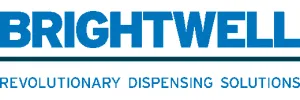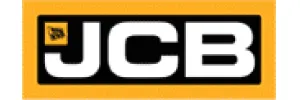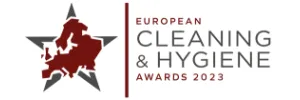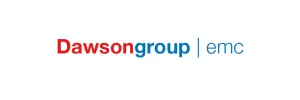News & Insights
Read the latest news from us and our clients across the globe

Posted on 15 June 2014 by adtrak.admin
From factory to farm – industry opportunities for surplus food
Food waste management is a common topic in the industry, as manufacturers and retailers strive to improve their environmental compliance and, ultimately, their profitability. But in line with the increasingly popular concept of the circular economy, specialist surplus food recycler SugaRich is working with producers and stores, large and small, to show that this ‘waste’ is in fact a valuable resource that can be retained in the food chain.
There was a time when food ‘waste’ simply fell under the radar. Factors such as production errors, packaging defects, product damage and inaccurate weights and sizes, have long meant that some foods never make it onto supermarket shelves.
However, startling statistics have, over time, placed newfound pressures on manufacturers and retailers of food. In January 2013, for example, the Institution of Mechanical Engineers’ report – GlobalFood: Waste Not, Want Not – shockingly revealed that an estimated 30-50% of food produced around the world never reaches a human stomach. Of course it is not just commerce that is to blame. Later in 2013, resource efficiency experts WRAP highlighted that food wastefulness in UK homes is costing the country a staggering £12.5 billion a year.
It has slowly become evident that both businesses and households need to pay more attention to their environmental consciences. Widespread improvements are needed, not least because the UK must halve edible food waste by 2020. But to what extent are manufacturers and retailers aware of the options for their surplus food?
It is largely acknowledged that landfill is a costly and environmentally unfriendly practice. Landfill taxes have continued to rise by £8 per tonne since 2008, placing significant financial pressures on organisations opting for this traditional disposal route. Furthermore, the environmental impact of waste that is left to biodegrade is something the EU is working hard to avoid.
Anaerobic Digestion (AD) is widely reported on in the media as a more environmentally compliant alternative, and indeed AD does play a role in the development of efficient waste management and renewable energy systems. It creates methane which has the potential to be used as a vehicle fuel; biogas which can be burned to produce heat and electricity; digestate which can be used as a fertiliser; and water.
However, under the principles of the Waste Framework Directive’s hierarchy of options for ‘waste’, energy recovery is only marginally better than disposal. This means that, following attempts to prevent and minimise the creation of food waste at source, efforts should then be focused on reusing and recycling surplus produce instead.
One company that food manufacturers and retailers can turn to for such specialist surplus food processing is SugaRich. For over 50 years, this Northamptonshire-headquartered organisation has been leading developments in the transformation of starch-rich food ‘waste’ into nutritious animal feeds.
Group director, Paul Featherstone, sets the scene: “For decades we have worked with manufacturers and retailers, to segregate and recover foods such as biscuits, bread, breakfast cereals, crisps and cakes that are unsuitable for human consumption. It may be that they simply don’t look the part, but they are perfectly fit for animal consumption. We then utilise a sophisticated manufacturing process to create cattle, pig and chicken feeds, tailored to suit a variety of end user requirements. We can even extract packaging materials for recycling, to increase the resourcefulness of our model.”
The process is subject to stringent regulations and quality control to ensure a safe, traceable and assured feed. For example, products destined for inclusion in animal feed must be kept entirely separate from other foods during transport, storage and dispatch to and from a factory or supermarket returns depot. Segregation methodology is even more crucial in facilities handling permitted raw materials and foods prohibited from use in animal feed, such as meat or fish.
However, if carefully managed by experienced agri-business experts who remain in close contact with compliance schemes and industry assurance bodies, this process enables a variety of high-quality feeds to be produced. Meticulous computer-generated formulae control the types and rations of ingredients that are ground, sieved and blended. SugaRich’s finished product bays then hold 60 tonnes of feed which are stored for no longer 48 hours before being transported to animal feed compounders, blending plants or farmers.
Paul continues: “We pledge to supply our customers with fresh products from food factory to farm, and we can make this promise with confidence. We’ve devised ways to recover and convert surplus foodstuffs so that they can be delivered and consumed by animals, before the products would even have reached the supermarket shelves they were originally intended for.”
In 2013 alone SugaRich recovered over 350,000 tonnes of surplus food that would otherwise have been incinerated or left to biodegrade. Paul explains: “One recent new customer was sending 10 tonnes of surplus food for Refuse Derived Fuel (RDF) incineration per week, purely because they didn’t realise an alternative existed. Our approach ensures we retain more valuable nutrients in the food chain, thus helping to improve the quality of livestock and their production, and therefore what people subsequently eat. We are effectively turning the traditional linear food chain into a circular model.
“This ‘closed loop’ approach to business is growing in popularity in the UK, as the nation strives to improve its sustainable, resource efficient and somewhat restorative approach to society. As a result, we are no longer just working with manufacturing and retail giants – the environmental and cost-saving benefits of our model are increasingly being sought by smaller organisations too.”
As SugaRich’s customer base continues to grow, so too does the company’s financial performance. In 2013, for example, turnover from the company’s 17 sites rose to £101m, up almost 30% on the previous year. Such notable figures enable SugaRich to continually invest in its people – with 175 employees, staff retention sits at an impressive 86% – and its services.
At an early stage SugaRich moved away from using eight-wheeled, 32 tonne vehicles traditionally associated with the waste industry, into 44 tonne articulation. This required significant SugaRich investment. However, with 10 energy-efficient artic tractor units and trailers, SugaRich has slashed the cost and environmental impact of its logistical operations, which adds greater value to its products.
The company also further strengthened the circularity of its business model in December 2013, with the launch of SugaTrak. Transforming SugaRich’s long-standing approach to ‘waste watching’, this innovation enables factories to identify the root cause of surplus food creation. This prevention of waste at source reduces the level of materials that SugaRich can process – naturally impacting on SugaRich’s profitability – but shows true commitment to clients’ margins, the environment and the circular economy.
Paul elaborates: “From day one our priority has been to devise a lasting business model. We wanted to build robust foundations on which to grow the company, and make long-term investments that would enable us to support clients of all sizes, for many years to come.”
This mind-set appears to sit favourably with customers too. For example, David Timson, Head of Waste at Sainsburys, commented: “We view SugaRich as a key strategic partner in achieving our environmental goals. They have had a manifest effect on the level of waste Sainsbury’s produces and continue to come up with innovative solutions to fine tune the process.”
Becoming the UK leader in this niche arena has required non-stop dialogue with stakeholders throughout the supply chain. Paul continues: “We remain in close contact with producers of surplus food and their trade associations, such as the Food and Drink Federation, to ensure we are adding as much value as we can.
“In order to satisfy the needs of the animal feed industry – effectively the end ‘users’ of our products – we also maintain strong links with agribusinesses. We cannot afford to take our eyes off the ball when it comes to safety and legislative compliance, not to mention product effectiveness and value for money. If we didn’t satisfy the requirements of blenders and farmers, our business model would be totally flawed.
“Our work with trade assurance schemes helps to ensure everything ties seamlessly together. We invite everyone within the supply chain to visit our facilities and talk to one another about the issues and opportunities that exist with former foodstuffs. This strengthens the links within the closed loops we’ve worked so hard to foster.”
The future of this factory to farm approach certainly looks bright. SugaRich is currently investigating opportunities to ‘export’ the company’s resource efficiency expertise to neighbouring European nations in the next few months, and Paul was recently invited to join an EU-China Trade Mission to Beijing, as a European industry expert on Former Foodstuffs.
The company’s work is becoming recognised outside the food, agriculture and waste management industries too. In late 2013, SugaRich was highlighted on the London Stock Exchange’s 1000 Companies to Britain list, in recognition of the dynamism of the business during times of economic struggles.
Paul concludes: “We are very proud of the innovative mindset that we have worked hard to nurture within our business, but our success all comes down to our understanding of the hurdles that customers face. Managing food waste is a potentially costly exercise that can be the difference between running a profitable and compliant food manufacturing or retail facility, or entering into financial difficulties and falling foul of the law.
“What’s more, food producers and handlers will continue to attract intense media scrutiny for irresponsible waste management practices. We are trying to develop as many environmentally compliant food management systems as possible to safeguard company reputations and, ultimately, support the UK’s zero food waste to landfill ambition.”
Extract published in Food Management Today – May 2014
Experts in Public Relations Services & Communications Management
Our ServicesGenuine industry specialists in cleaning and hygiene, environmental and recycling, and facilities management
Our Sectors












